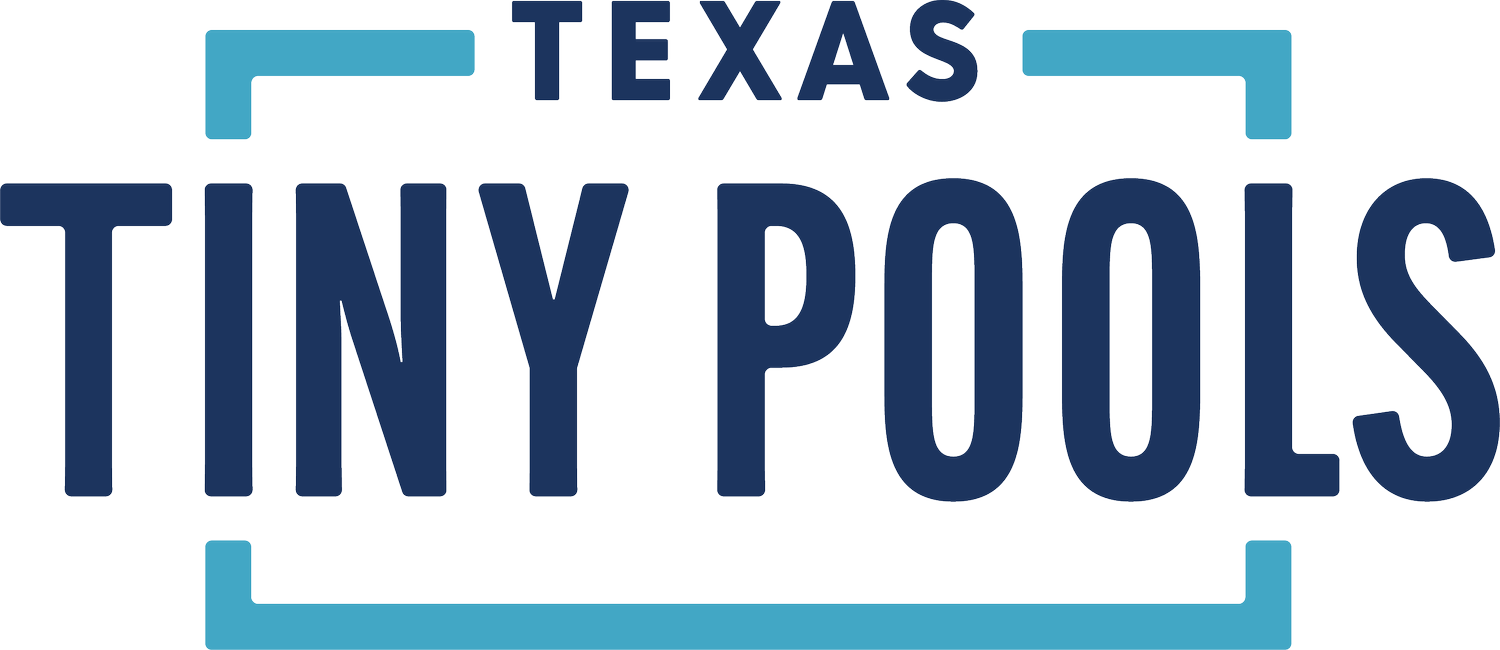What’s up with the Pool Equipment Pad?
So you want to get a Tiny Pool! Deciding how your future pool will fit into your yard is half the fun and half the challenge, but did you know you also have to think about where the pool equipment will live?
When we do a site visit, we spend a good chunk of time not only discussing your pool, but also how the equipment pad can fit seamlessly into your yard — making sure it helps your pool run efficiently AND doesn’t break the bank.
Your equipment pad is the brains and muscle of your pool, so it deserves some attention! It’s where all of the pool equipment lives and it’s super important to know what all is there and how it works.
Wonder what one looks like, how loud it is and what the rules are regarding where it can be built in your yard? Check out our video and some FAQs below!
How big is a pool equipment pad?
Our standard equipment pad is 3’ x 7’ (21 square feet), which will accommodate our standard equipment plus a natural gas heater (which most of our clients choose to add - use your pool all year!). Keep in mind that we will also need approximately 1’ clear on each side, and 2’ in the front for piping.
If you don’t get a heater, it can be as small as 15 square feet. If you don’t have natural gas and still want to heat your pool, you can add an electric heater and/or chiller and that will make your equipment pad larger - up to 4’ x 11’ (44 square feet) due to the larger electric unit.
Equipment Example #1
1: Concrete Equipment Pad
2A: Natural gas heater
3: Chlorinator
4: Pool filter
5: Pool pump
6: Electrical transformer
There are a lot of machines on there! What is included as standard equipment?
Our standard equipment pads include:
Pool pump
Pool filter
Chlorinator
Pool light switch
What are the upgrade options?
Natural gas heater or electric heat pump / chiller
UV disinfection and/or Ozone generator (an alternative to solely chlorine)
Vacuum switch
Blower for spa jets
Pump for a swim jet
Pool automation (lets you control your pool remotely, from your phone, tablet, etc.)
Equipment Example #2
1: Concrete equipment pad
2B: Electric heater/chiller
3: Chlorinator
4: Pool filter
5: Pool pump
7: Automation control panel
(installed on rack when not attached to house)
Equipment pads DO count towards impervious cover.
We all know that the City of Austin has strict rules around impervious cover (45% maximum is what’s typically allowed), so it’s important to remember that the concrete pad that your pool equipment sits on does count toward this number. We always calculate your equipment pad into your total impervious cover when we are submitting for a pool permit.
Equipment Example #3
Natural gas heater
UV water sanitizer
Ozone generator
Pool filter
Chlorinator
Pool pump
Automation Control Panel
They can’t be located just anywhere in your yard.
You might think you can plop the equipment pad just about anywhere, but there are some best practices and code rules around where they can go. Like your pool, an equipment pad can’t be built in a protected tree’s half critical root zone. We also can’t trench pipes in a half critical root zone, so the pipes running from the equipment from the pool have to also be considered.
A lot of folks ask if we can fully enclose your pool equipment in a shed or similar structure. If you get a natural gas heater, the answer is no. If you do basic equipment with no heater, then sometimes we can, but there is likely added cost if we have to trench pipes through existing concrete.
We also want to build your equipment pad in the most efficient place to keep your pool running happily. That usually means finding a happy medium between your electrical panel and natural gas drop (if you’re heating your pool that way), and the pool itself. We don’t want the pipes from the pad to be any longer than they need to be, for speed and economic reasons. This location is an important consideration and one we talk in depth with you about at our site visits.
Can the equipment be hidden?
There are several creative ways you can partially enclose or hide your equipment pad and make its area a functional part of your yard. Solid fencing with a gate that’s open on top is a great option and can double as float storage.
Or go a little lighter with a landscaping screen for jasmine vines to grow up and naturally hide!
How loud is the pool equipment?
Worried about still catching your beauty sleep? That’s a valid consideration! The variable-speed pumps that we install are energy-efficient and super quiet. See below for some noise level comparisons. If you add a heater, that’s a little louder, but you likely aren’t running the heater at night. Keep your neighbor friends and their windows in mind too when thinking about noise!
We hope you’ll join us at our next pool tour to experience the equipment layout and hear it for yourself!







